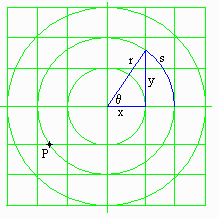- About MAA
- Membership
- MAA Publications
- Periodicals
- Blogs
- MAA Book Series
- MAA Press (an imprint of the AMS)
- MAA Notes
- MAA Reviews
- Mathematical Communication
- Information for Libraries
- Author Resources
- Advertise with MAA
- Meetings
- Competitions
- Programs
- Communities
- MAA Sections
- SIGMAA
- MAA Connect
- Students
- MAA Awards
- Awards Booklets
- Writing Awards
- Teaching Awards
- Service Awards
- Research Awards
- Lecture Awards
- Putnam Competition Individual and Team Winners
- D. E. Shaw Group AMC 8 Awards & Certificates
- Maryam Mirzakhani AMC 10 A Awards & Certificates
- Two Sigma AMC 10 B Awards & Certificates
- Jane Street AMC 12 A Awards & Certificates
- Akamai AMC 12 B Awards & Certificates
- High School Teachers
- News
You are here
Bloom's Taxonomy in Developing Assessment Items - Course Organization/Design
Our precalculus course carries three semester-hours credit. Classes meet for 150 minutes per week in two or three meetings per week for 15 weeks. In the WebCT-based Precalculus sections, a complete set of course materials is available online, including syllabus, schedule, assignments, content/lessons, quizzes, and tests. In addition to providing links to these materials and tools for tracking student performance on quizzes, WebCT provides communication tools such as discussion boards, chat rooms, and e-mail. Students in these sections may complete the course entirely in class, entirely online, or through a combination of classes and online work. Currently, all students complete online quizzes, and most of them come to class on a regular basis.
The course materials are organized into approximately 35 lessons and are available both online and in print. An online lesson contains various questions and tasks for students to work on along with their reading. They may check their answers in a pop-up window, which has the advantage of giving every online student an opportunity to "reply," in contrast to a classroom situation in which only a few students may be participating. Typically, lessons may be shortened and made more interesting to some students by asking questions such as "Would you like another problem?" or "Would you like more explanation?". Students choose whether to answer these questions -- the additional material is provided in pop-up windows for those who request it. Java applets provide additional interactivity and animated illustration of concepts.
There are online quizzes for each lesson. These comprise a significant online aspect of the course. While they are only a minor part of the course grade, they provide major benefits, including immediate feedback on student progress to both the student and the instructor. Pedagogical values of the quizzes include reinforcement and engagement for concepts recently covered in the corresponding lesson. Administered after the small-group work in the classroom, they give additional focus for students’ interaction during the following class period. The challenge to instructors is to develop quiz questions that will engage the students most effectively.
As developers, we also use a technique of "cycling" to reinforce concepts. Whenever possible, topics, diagrams, methods, and computations are revisited. But each time they are approached in a different setting or from a different direction. For example, variations in Figure 1 (repeated below) are used for winding functions, polar coordinate systems, vector components, relating arc length to central angle, and applications involving clock faces, circular tracks, and Ferris wheels.

Figure 1 (repeated): Multiple representations
Draga Vidakovic, Jean Bevis, and Margo Alexander, "Bloom's Taxonomy in Developing Assessment Items - Course Organization/Design," Convergence (December 2004)




